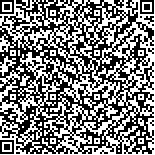高焱,燕铁斌,尤黎明,等.Rasch模型用于ICF康复组合中活动和参与成分分值转换的多中心研究[J].中华物理医学与康复杂志,2020,42(8):685-689
扫码阅读全文

|
| Rasch模型用于ICF康复组合中活动和参与成分分值转换的多中心研究 |
|
| |
| DOI:10.3760/cma.j.issn.0254-1424.2020.08.003 |
| 中文关键词: 国际功能、残疾和健康分类 康复 活动和参与 Rasch模型 |
| 英文关键词: International Classification of Functioning Disability and Health Rehabilitation Score transformation Rasch analysis |
| 基金项目:广州市科技局产学研协同创新重大专项(201704020140);美国中华医学基金会项目(04-808) |
|
| 摘要点击次数: 6098 |
| 全文下载次数: 7821 |
| 中文摘要: |
| 目的 应用Rasch模型对ICF康复组合中“活动和参与”成分进行分析,探讨其作为临床数值评定量表的可行性。 方法 于2017年1月至2017年5月期间在广东、湖北、福建13个研究中心采用配额抽样(神经系统50%、肌肉骨骼系统25%、心肺系统10%、其它15%)方法收集非急性期住院患者资料。由经过培训的医务人员采用ICF康复组合中“活动和参与”成分对患者进行评定。采用RUMM 2030统计软件对所收集数据进行Rasch分析,统计指标包括Rasch模型整体拟合度、阈值估计值和局部独立性。 结果 最终完成515例患者资料收集,其中神经系统279例(54.2%)、肌肉骨骼系统119例(23.1%)、心肺系统49例(10.0%)、其它68例(13.2%)。经Rasch分析,将ICF康复组合“活动和参与”成分划分为“活动”和“参与”两个维度。“活动”维度共有9个“类目” (“d450步行”和“d465利用设备到处移动”选评其一)符合模型预期(χ2=18.74,P=0.0274>Bonferroni校正后显著性水平0.0056),条目和个人拟合残差均值(标准差)分别为-0.34(1.24)和-0.32(0.98)。“参与”维度共有5个“类目”(“d230进行日常事务”和“d850有报酬的就业”形成测试组合)符合模型预期(χ2=16.25,P=0.0927>Bonferroni校正后显著性水平0.01),条目和个人拟合残差均值(标准差)分别为0.24(0.78)和-0.31(1.06)。与Rasch模型相拟合的类目可通过公式将该维度内等级评分总分转化为数值得分。 结论 通过重新计分、删除不拟合类目和形成测试组合等处理,ICF康复组合中“活动和参与”成分可作为“活动”和“参与”两个数值评定量表应用于临床。 |
| 英文摘要: |
| Objective To explore the suitability of using Rasch analysis to transform scores on the Activities and Participation component of the ICF Rehabilitation Set. Methods Between January and May 2017, five hundred and fifteen post-acute rehabilitation patients were recruited in 13 research centers through quota sampling. Specially-trained health professionals used the Activities and Participation component of the ICF Rehabilitation Set to collect data. Rasch analysis was performed using RUMM 2030 software to test for goodness of fit, threshold estimates, and local dependency. Results Of the five hundred and fifteen participants, 279 (54.2%) had a neurological condition, 119 (23.1%) a cardiopulmonary condition, 49 (10.0%) a musculoskeletal condition, and 68 (13.2%) some other condition. After Rasch analysis, the Activities and Participant component of the ICF Rehabilitation Set was divided into two domains: Activities, and Participation with 9 categories under activities and five under participation. Conclusions After rescoring the response options, deleting four poorly-fitting categories and generating one testlet, it was found that the activities and participation component the ICF Rehabilitation Set can be divided into two outcome measures to be applied in clinical practice. |
|
查看全文
查看/发表评论 下载PDF阅读器 |
| 关闭 |